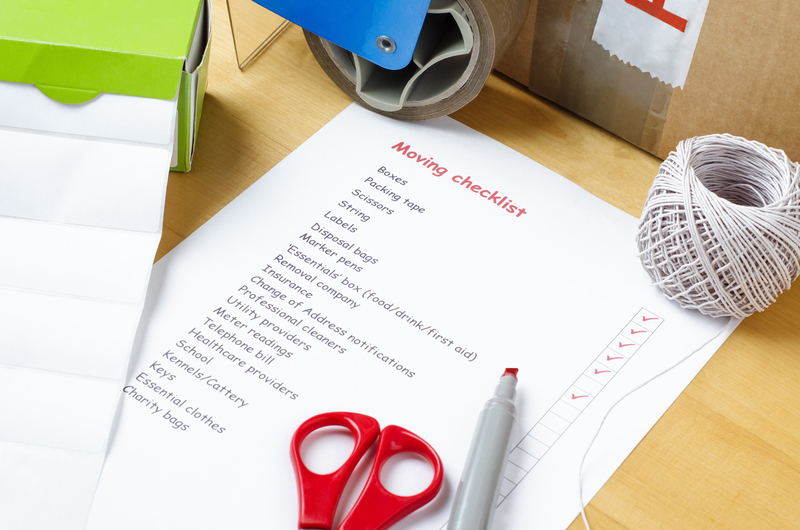Sofa Storage Success: Expert Tips for Longevity
Posted on 22/05/2025
Sofa Storage Success: Expert Tips for Longevity
Investing in the perfect sofa is a blend of comfort, style, and functionality. But did you know that proper sofa storage is crucial to preserving your prized piece for years to come? Whether you're moving, remodeling, or just need to temporarily store your sofa, implementing proven sofa storage techniques can work wonders. Read on for comprehensive guidance, expert tips, and actionable steps to attain sofa storage success and extend the lifespan of your furniture.
Why Proper Sofa Storage Matters
The sofa is often the heart of your living space, hosting family time, relaxation, guests, and even pets. Like any substantial investment, taking diligent care pays off. Incorrect storage can lead to:
- Mold and mildew growth
- Fabric discoloration or fading
- Frame warping or wood damage
- Infestation by pests
- Unpleasant odors
- Irreparable tears and scratches
Proper sofa storage techniques don't just prevent these issues--they also enhance the overall longevity and aesthetics of your furniture. Let's dive into the expert advice you need to keep your sofa in pristine condition.

1. Preparing Your Sofa for Storage: A Step-by-Step Approach
Clean Your Sofa Thoroughly
Before you even consider moving your sofa into storage, give it a meticulous clean:
- Vacuum every surface: Use the upholstery and crevice attachments to remove dust, debris, and pet hair from all nooks and crannies.
- Spot-clean stains: Use a manufacturer-recommended fabric cleaner for textiles, or appropriate polish for leather and wood sections.
- Let it dry completely: Even slight moisture can breed mold during storage. Allow the sofa to air dry for at least 24 hours in a shaded, ventilated space.
Disassemble When Possible
Reducing the size of your sofa makes it easier and safer to store:
- Remove legs and feet, if possible, to prevent warping and stress during transport.
- Detach cushions and pillows; store these separately to reduce the risk of permanent indentations.
- Keep all screws, legs, and small pieces in labeled bags attached to the main sofa frame.
Protect and Cover
Choose protective covers wisely for sofa storage longevity:
- Avoid plastic wrapping directly against the fabric, as it traps moisture. Instead, use cotton or canvas covers that allow for air circulation.
- For leather sofas, use breathable slipcovers or old sheets to prevent cracking and peeling.
- Wrap wooden legs and arms in bubble wrap to avoid scratches and nicks.
2. Selecting the Perfect Storage Environment
Climate-Controlled Storage: Your Sofa's Best Friend
One of the golden rules of expert sofa storage is protecting your furniture from temperature extremes and humidity. Consider the following:
- Choose a climate-controlled unit: These units keep temperatures and humidity stable, preventing mold, warping, and fading.
- Avoid external garages or sheds: Non-insulated spaces are subject to weather changes that can be disastrous for delicate fabrics.
Cleanliness and Pest-Proofing
Even the most luxurious storage unit is susceptible to dust and pests. Here's how to optimize long-term sofa storage solutions:
- Make sure the storage facility is clean, dry, and reputable.
- Lay down a clean tarp or wooden pallet before placing your sofa to avoid direct contact with the floor, preventing moisture wicking and promoting ventilation.
- Use mothballs (in breathable bags) or natural repellents like cedar chips around the sofa--but avoid direct contact with upholstery.
3. Expert Techniques For Sofa Arrangement In Storage
Stand, Stack, or Sit? The Right Way Matters
How you position your sofa can make all the difference in its longevity:
- Always store sofas upright on their legs, not on the side or back, to maintain the integrity of the frame and cushions.
- Avoid stacking items on top of the sofa; this can deform padding and cause permanent impressions.
- If your storage space is limited, use vertical space for shelving other items, but never let anything rest on the sofa itself.
Ensure Air Flow
Good ventilation is essential for long-term sofa storage success:
- Leave a gap of at least 6 inches between the sofa and storage unit walls to allow air to circulate and prevent mildew.
- Don't crowd your sofa in with other items--a cluttered unit traps heat and odors.
4. Long-Term Sofa Storage Care and Checks
Regular Inspection is Key
If you plan to store your sofa for several months or longer, make it a habit to:
- Visit the storage unit every month or two if possible.
- Check for signs of damp, pests, or fabric discoloration.
- Rotate seat cushions or pillows to maintain their shape.
- Refold or adjust the protective cover if it becomes soiled or shifts.
Refreshing Before Use
Once it's time to bring your sofa back home:
- Allow the sofa to "breathe" by removing covers and airing it out in a ventilated room for several hours.
- Gently vacuum and clean surfaces as needed.
- Polish wood and leather components with suitable products to restore shine and suppleness.
5. Pro Tips for Specialty Sofas
Leather Sofa Storage
Leather demands extra care for successful storage:
- Apply a high-quality leather conditioner before storage to prevent drying and cracking.
- Shield from direct sunlight--even in storage--to avoid aging.
- Regularly inspect for mold or mildew, wiping down with a dry cloth if necessary.
Fabric and Velvet Sofas
- Use fabric-specific cleaners and avoid chemical-laden detergents.
- Cover with cotton sheets--not plastic--to keep dust out while allowing airflow.
- Ensure complete dryness of both fabric and stuffing before storing.
Antique and Designer Sofas
- Consult a professional restorer for high-value or antique items before storing.
- Avoid harsh cleaning methods; opt for gentle dusting and spot-cleaning.
- Consider insurance for highly valuable or sentimental items kept off-premises.
6. Declutter and Downsize: When to Store, When to Sell
Not every sofa deserves to be stored. For optimal storage success and home organization, ask yourself:
- Will I use this sofa again within two years?
- Does it fit my future decorating plans or space?
- Is it more cost-effective to sell or donate and invest in a new piece later?
Avoid using precious storage space for items you're unlikely to use in the future. Selling or donating in good time prevents clutter and maximizes both value and space.
7. Common Mistakes in Sofa Storage and How to Avoid Them
- Storing a damp sofa: Always ensure the sofa is fully dry before covering or storing to prevent a moldy disaster.
- Using plastic wrap directly: Plastic traps moisture; opt for breathable covers as detailed above.
- Skipping climate control: Humidity can wreak havoc on both wood and fabric. Always choose a climate-controlled unit for long-term storage.
- Neglecting pre-storage cleaning: Even minor crumbs can attract critters and trigger odors. Clean every nook and cranny.
- Stacking boxes or heavy items on top: This leads to sagging and creases that may never bounce back.

8. The Ultimate Sofa Storage Success Checklist
- Clean thoroughly and dry completely
- Disassemble and label removable parts
- Protect with breathable covers
- Select climate-controlled, pest-free storage
- Store upright and never stack heavy items
- Leave clearance for airflow
- Check sofa's condition periodically
- Refresh and clean before re-use
Conclusion: Preserving Comfort & Memories with Smart Sofa Storage
Your sofa is more than just a piece of furniture--it's a centerpiece of shared moments, laughter, and comfort. Following expert sofa storage tips ensures it remains beautiful, functional, and inviting for years to come. Remember, attention to preparation, environment, regular maintenance, and smart placement pay off with extended sofa longevity. Use these strategies to achieve true sofa storage success and enjoy the rewards of well-preserved comfort and style!
Frequently Asked Questions About Sofa Storage Longevity
- Can I store my sofa in a non-climate controlled unit for a few months?
It's possible for very short periods if the sofa is well protected and cleaned, but for anything beyond a month or in humid climates, climate control is strongly recommended. - Is it better to keep the cushions on or off during storage?
Removing and storing cushions separately helps maintain shape and reduces wear on the main frame. - How can I remove musty smells after storage?
Airing out, vacuuming, and light cleaning with baking soda or upholstery sprays usually do the trick. - Should I use furniture polish before storage?
Yes--condition wood and leather elements to ensure they stay supple and protected.
Ready to elevate your own sofa storage? Use this guide to maximize longevity, preserve value, and protect your comfort investment every step of the way.



